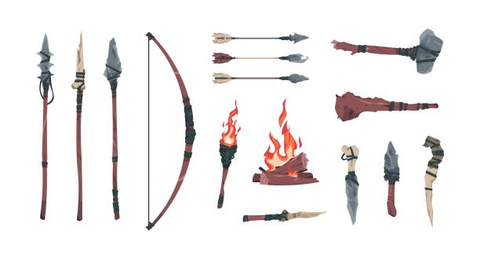Imagine a world where survival hung by a thread, balanced precariously on the edge of a sharpened stone and human determination. In the harsh landscapes of prehistoric times, our ancestors fought not just for territory, but for pure survival against nature’s most unforgiving challenges.
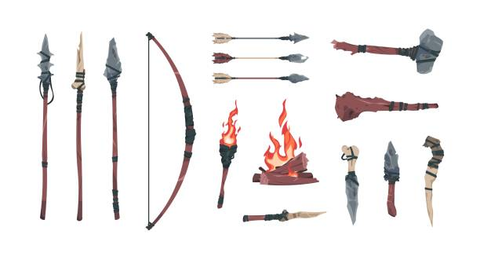
Credit: Battling Blades
The Dawn of Survival Weapons
Prehistoric environments were unimaginably brutal. Early humans faced constant threats from predatory animals and rival groups, forcing them to develop ingenious tools that would become the first military weapons. These weren’t just simple implements; they were sophisticated survival technologies that demonstrated remarkable human cognitive advancement.
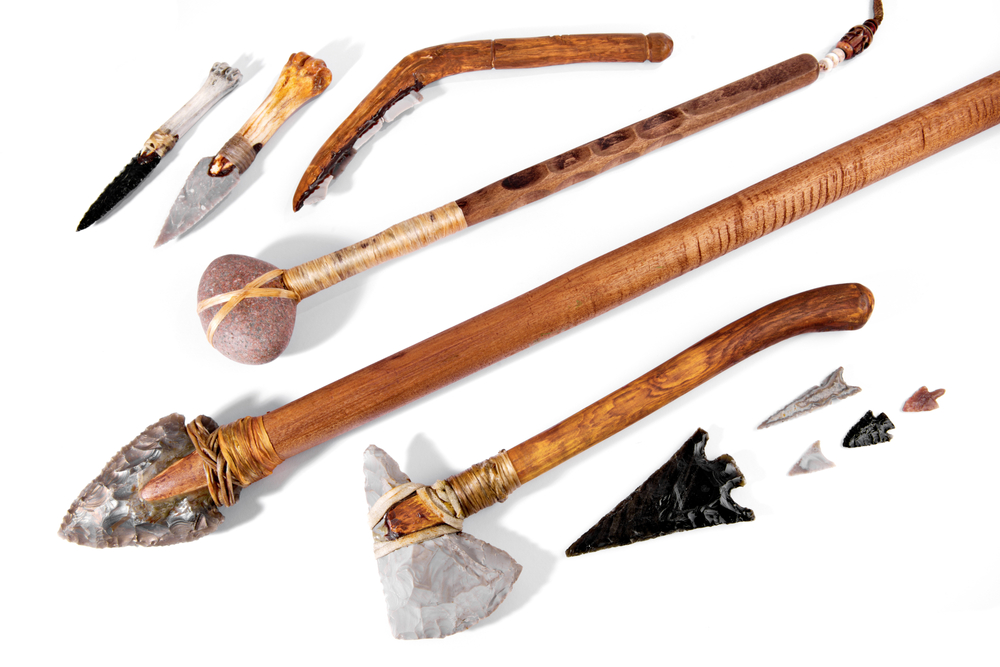
Credit: Discover Magazine
Stone tools emerged as multipurpose survival instruments. Spears, clubs, and early throwing implements became extensions of human capability. A well-crafted stone tool could mean the difference between life and death. Imagine a hunter-gatherer crafting a sharp stone spearhead, each strike of another stone carefully chipping away to create a lethal point capable of piercing animal hide or defending against potential attackers.
From Stone to Metal: A Technological Revolution
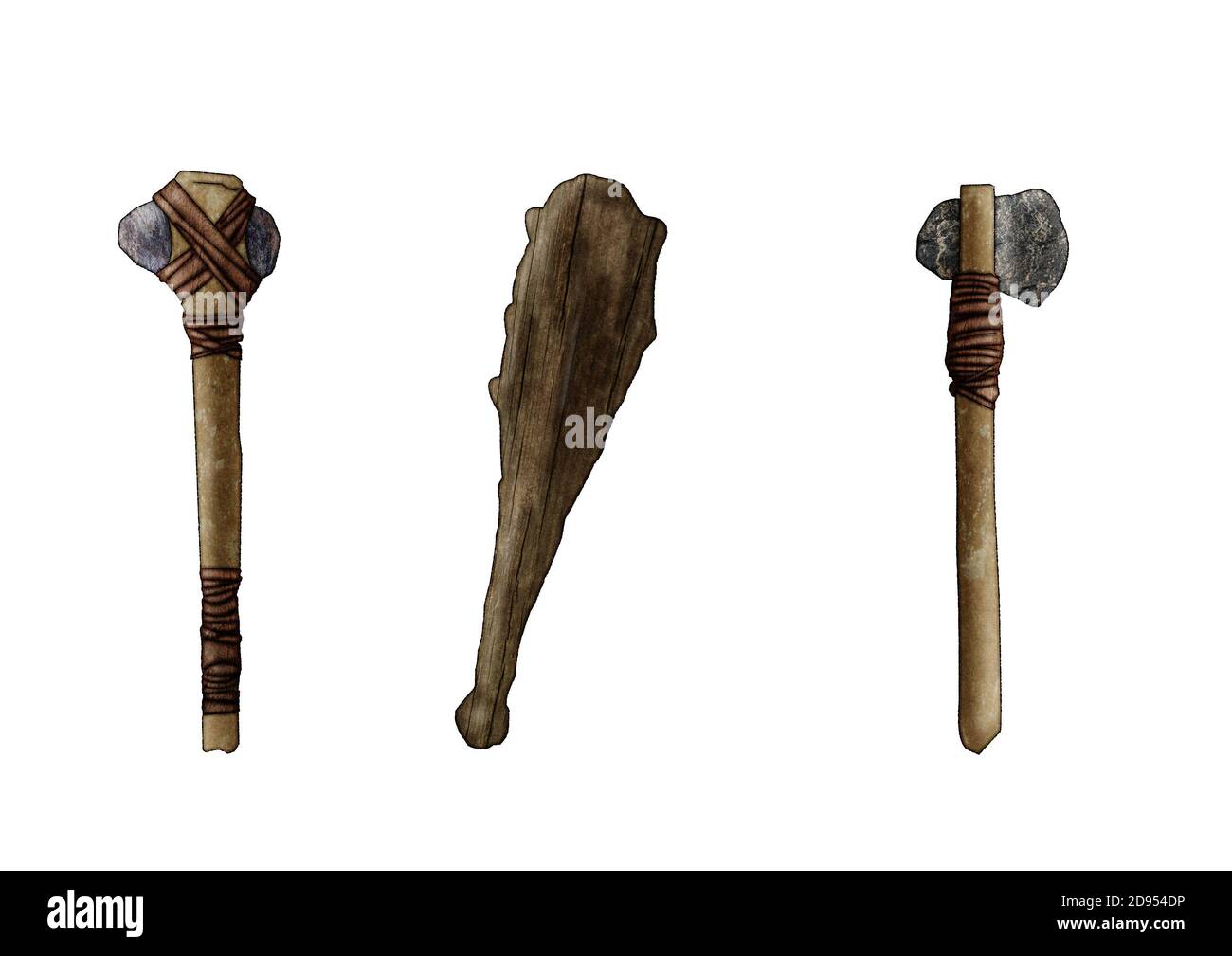
Credit: Alamy
As human societies evolved, so did their weapons. The transition from stone to metal marked a pivotal moment in military technology. Bronze Age civilizations like the Sumerians and Egyptians pioneered metallurgy, transforming weapon production dramatically. Metal weapons were stronger, more durable, and allowed for more complex combat strategies.
The Iron Age brought even more significant advancements. Weapons became sharper, more resilient, and could be produced more efficiently. This technological leap wasn’t just about creating better tools—it represented a fundamental shift in human social structures and military capabilities.
Warfare Beyond Weapons: Social Dynamics
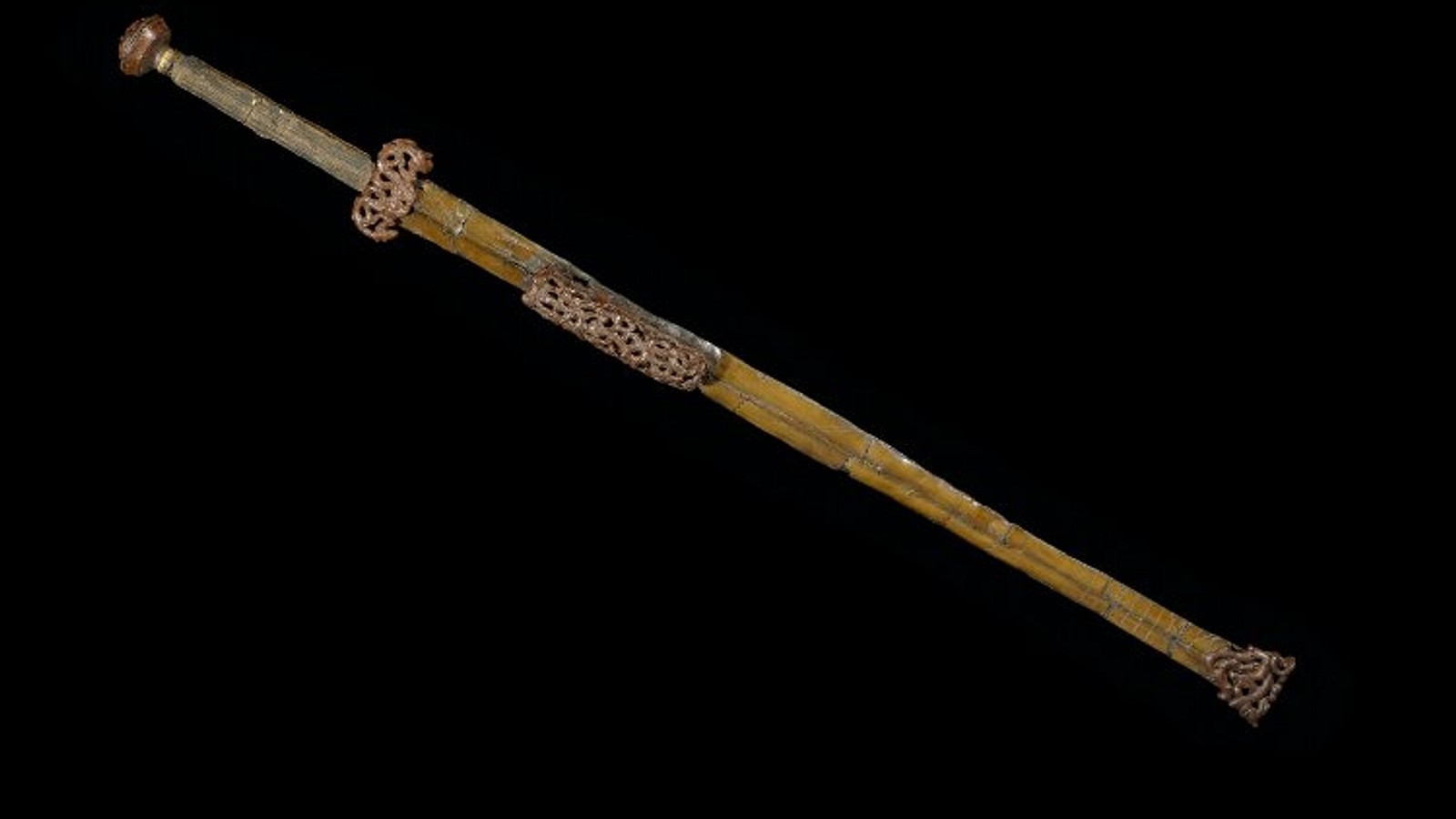
Credit: World History
Prehistoric warfare wasn’t merely about physical combat. It was a complex social phenomenon that shaped human interactions and cultural development. The emergence of organized military structures led to social stratification and new hierarchical systems. Close-quarters combat and the introduction of ranged weapons revolutionized how human groups interacted and competed.
The psychological impact of weapon development cannot be overstated. Each technological innovation represented human problem-solving at its most primal level. Necessity truly became the mother of invention, with conflict driving remarkable technological progress.
A Legacy of Human Adaptation
Today, when we look at modern military technology, we’re witnessing the latest chapter in a story that began thousands of years ago. Each weapon represents not just a tool of conflict, but a testament to human ingenuity and our remarkable capacity for problem-solving.
Prehistoric warfare teaches us that human progress is never linear. It’s a complex, fascinating journey of adaptation, survival, and continuous innovation.
References:
Battling Blades – Prehistoric Weapons and Tools – link
Discover Magazine – Timeline of Ancient Weapons – link
World History – Gallery of Prehistoric Weapons – link
Categories: Ancient Civilizations, Archaeology, History, Military, War History
Tags: Ancient Warfare, Archaeology, Bronze Age, human evolution, Iron Age, Military History, prehistoric weapons, Stone Age
Religion: Various
Country of Origin: World
Topic: Military History
Ethnicity: Various

